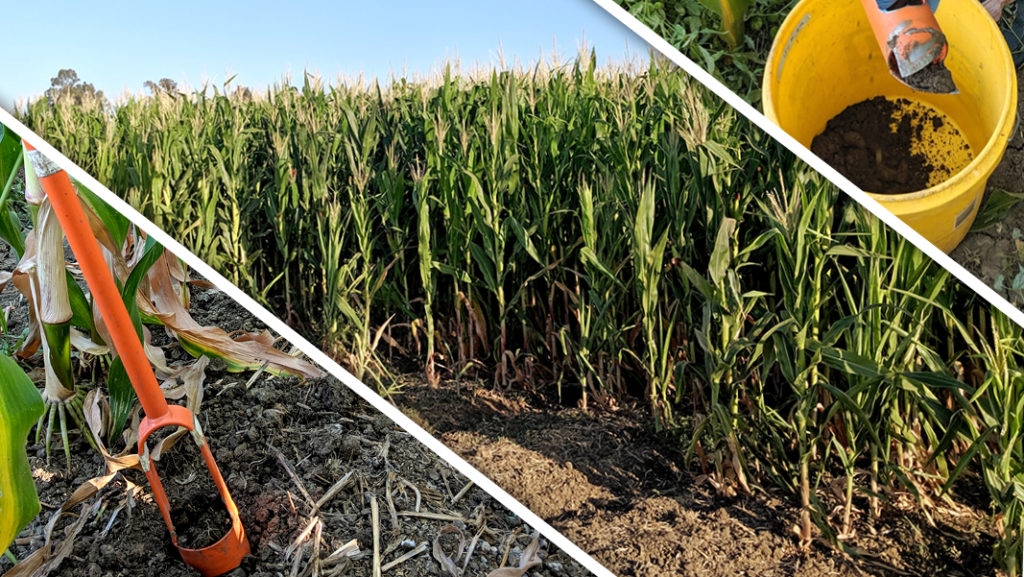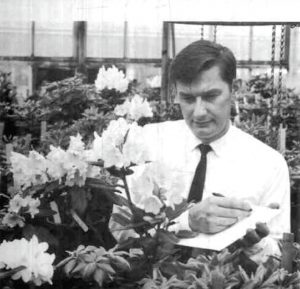Top: Salmonella (top, left), crops suffering from Sclerotinia damage (center) and Listeria (bottom, right). Images courtesy of CDC and UC Davis.
 Sally Brown
Sally Brown
Plants and people have more in common than you might think. I read recently that trees can talk to each other, and that there may be types of communications between plants. Pretty amazing and interesting — but I will still want to eat my vegetables, however much chit chat they may have between themselves. Another thing we have in common with plants is that we both get sick. Now that is a real concern. It has the potential to both limit the amount available for me to eat and make me a lot less hungry — not a good combination. It turns out, and this is a very good thing, that the medicine for both can be the same.
Pathogens in the soil can make both plants and people sick. Different types of pathogens are responsible with separate groups infecting the people and the plants. Compost can work to kill both types before either plant or people start feeling ill. The disease suppressive properties of composts for plant pathogens have been known for many decades. Harry Hoitink from Ohio State University was the father of much of this work. Early on he focused on specific composts and specific pathogens.
For example, Hoitink et al. (1997) says that if the compost is too high in nitrogen, it can actually work for disease, providing nutrients for the fungi that cause Fusarium wilt. Compost must be kept appropriately moist during the curing phase. Letting the material get too dry can encourage colonization by Pythium causing bugs. Research also has considered the specifics of who comes to colonize the compost. For example, compost that is cured outside will show better disease suppression because a wider variety of microbes will have come to settle in the material than when compost is cured in a closed environment. You can even add beneficial microbes to the material for suppression of specific diseases by specific good guys. Hoitink was granted patents for Ohio State University for using specific strains of Flavobacterium balustinum and Trichoderma hamatum for suppression of a number of pathogenic organisms.

Common scab of potatoes is a soil-borne disease caused by the bacteria-like organism Streptomyces scabies.
Finally the freshness of the material has been studied for suppressive abilities. Here researchers considered composts that have gone through thermophilic pathogen destruction. The high heat stabilizes the material but kills the bad and good guys equally. It is when the material is curing and the bugs come back that is the focus. If the material is too young, not only is it likely to be too reactive for plants, it is possible that it has been recolonized by pathogenic fungi. If it is too old, it will be too stable and not host enough good organisms, so will have minimal impact on pathogens when used as a potting media or in soils.
This focus has also been seen for compost and human pathogens. There was a realization followed by high levels of concern that biosolids compost (typically tested for pathogen kill using fecal coliforms and Salmonella as indicators) could be recolonized by Salmonella during the curing phase (Sidhu et al., 2001). Just like for the plant pathogens, the authors found that if the material is too old, it is easy for Salmonella to move in and take over. If it is younger, with more reactive organic matter still on the buffet, the Salmonella would be outcompeted by other nonpathogenic organisms.
Health Benefits To Soils
All of this brings us to a new study and the other, likely more important mechanism of compost action on plant and human pathogens: The health benefits that compost brings to soils make the good bacteria stronger and better able to outcompete the disease-causing (both plant and people) organisms. This has been understood for plants by Hoitink and in more recent studies and reviews. As compost adds organic matter to soils, the ancillary benefits — including balanced nutrition, more food, better air flow and water retention — help the microbial populations grow. The larger and more diverse these populations are, the better able they are at outcompeting the bad guys. It is a much simpler and easier mechanism to understand than having to use a precise type of compost at a precise stage to fight a single pathogen.
In the new study, scientists at the University of California, Davis (UC Davis) took soil samples from their long-term field plots at UC Davis’ Russell Ranch and infected them with bad guys. The long-term field trials are looking at the impact of different management practices on soils and crops, including utilization of compost. The research at Russell Ranch has shown that only when you add compost do you get carbon storage in soils. Cover crops alone and fertilizer alone actually showed reduced carbon. When composted poultry manure was added to the cover crop treatment, the carbon concentration increased across the full depth of the soil profile. The authors have since added a compost alone treatment so too early to see any real results.
For the food-borne pathogen study, the UC Davis researchers used two of the three typical bugs that are responsible for the Center for Disease Control’s romaine recalls, the spinach scares, and the near bankruptcy for Odwalla. Those three are Salmonella enterica, Listeria monocytogenes and Escherichia coli. They typically contaminate vegetables grown in or near unprocessed animal manures. Because of how often this happens, many farmers have stopped using manures, even if they’ve been properly composted. This does a disservice to the soils and to the circular economy. It also makes it more of a challenge to grow organic.

The University of California Davis researchers took soil samples from long-term field plots at UC Davis’ Russell Ranch and infected them with Salmonella and Listeria. Photos by Daniel Karp
The UC Davis researchers tested Salmonella and Listeria. They found that in the compost and cover crop soils infected with Salmonella and Listeria, the good bugs were able to outcompete the ones that make you sick. The soils without the compost had 4 to 5 times as many disease-causing pathogens at day 10 in comparison to the soils with the compost. Over time, differences decreased, as did the population of disease-causing microbes.
Why is this research important? First it opens the way for broader scale use of properly composted manures without the fear of disease and recalls. Second, it is much easier to implement than working to identify the specific kind of compost inoculated for a specific crop and disease combination. Finally, it confirms common sense and what those who work with soils already know. A better and higher functioning soil is what you want to keep the healthy microbes that are so critical for all aspects of life in soil going strong while defeating the bad guys in the process. Yet another reason to make compost a central component of regenerative agriculture and standard operations.
Sally Brown, BioCycle’s Senior Adviser, is a Research Professor in the College of the Environment at the University of Washington.














